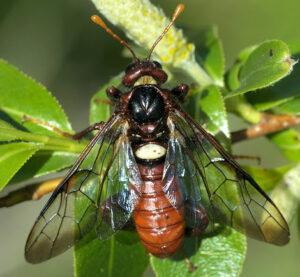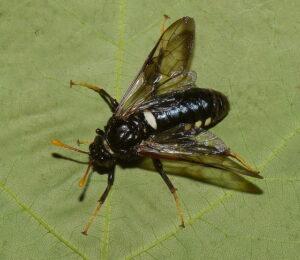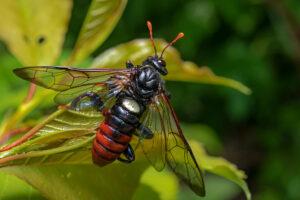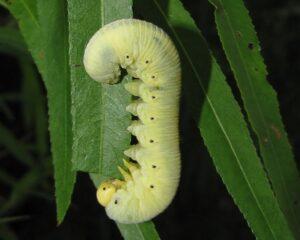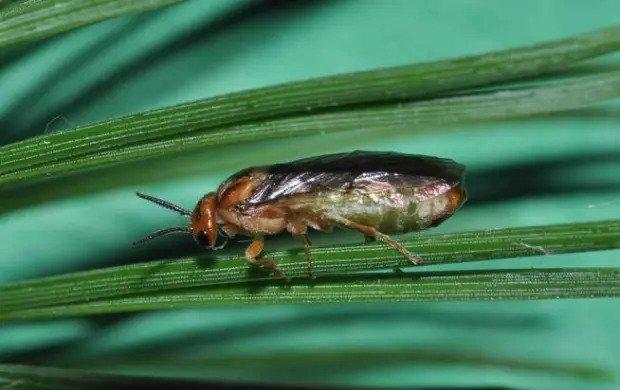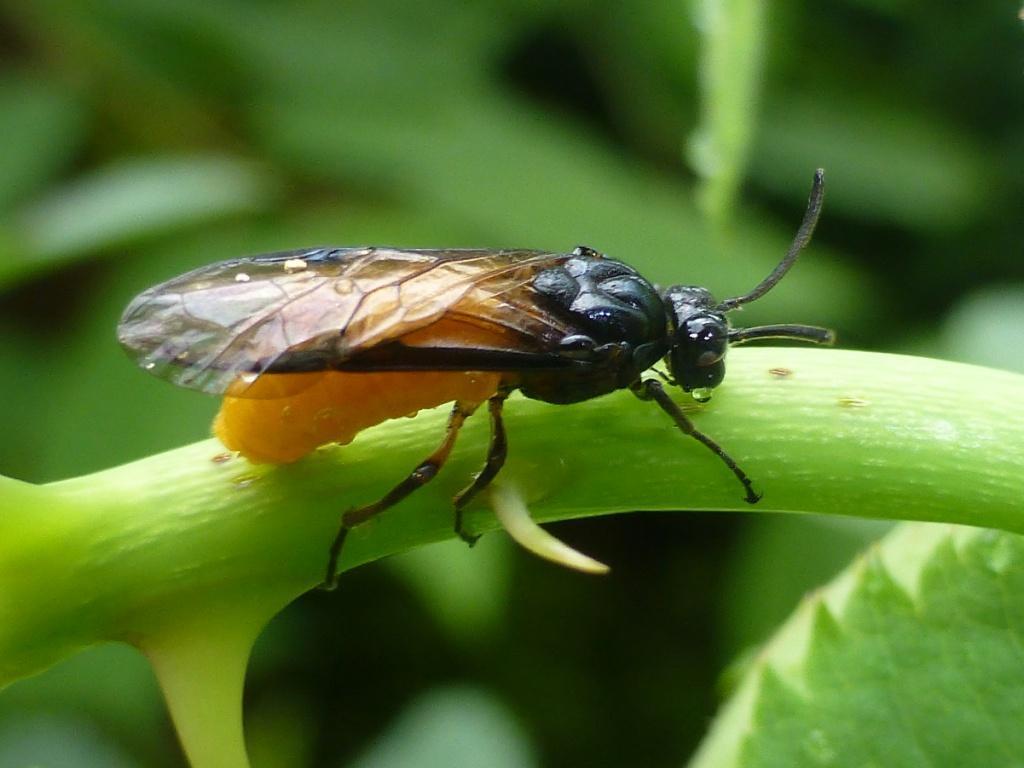Elm Sawfly (Cimbex americanus)
Updated on
28/10/2022Elm Sawfly is a large sawfly species belonging to the Cimbicidae family. The species was originally recorded as Cimbex americana by English zoologist William Elford Leach. However, the correct and accepted scientific name is Cimbex americanus.
These sawflies are not considered pests, but they have been reported to have defoliated significant numbers of elm, willow, and other ornamental and shade trees they use as their host plants, especially in the Northern Great Plains.
Scientific Classification
- Class:Insecta
- Order:Hymenoptera
- Suborder:Symphyta
- Family:Cimbicidae
- Genus:Cimbex
- Species:C. americanus
Conservation Status
Description
It is the largest sawfly species in North America, measuring around 1.2 inches (3cm) with a stout body.
Adults have a dark head and thorax, with a pair of orange antenna. The abdomen coloration varies between males and females, with males having a plain reddish belly, while in females, it is cream or yellow with dark stripes. They both have a yellow or cream-colored spot on the belly area near the thorax.
The wings are smoky, yellowish to brownish.
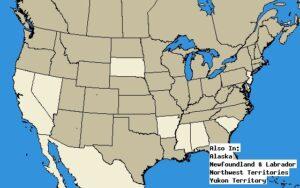
The 2-inch long yellowish larva has a single prominent dark stripe running down the back.
Distribution: Throughout North America, from Newfoundland and Florida to northern Texas, up to British Columbia, Alaska, and Canada
Habitat: Woodlands
Do They Bite: No; they do not have a sting
Lifespan: Up to 10 days
Predators: Insects like ants and wasps, as well as frogs, lizards, and birds; Larvae are preyed upon by beetles and various small carnivorous mammals
Behavior and Characteristics
Diet
Host Plants: Elm and willow; may also use maple, birch, basswood, plum, alder, and apple
Typical of sawflies, the adults often girdle the twigs of their host plants. Their diet also includes plant sap, flower nectar, and pollen.
Self Defense
This species does not have many defensive mechanisms to protect itself against predators. When captured, adults make a buzzing noise and defensively move their strong spiny legs to try and get free.
The larvae release a harmful chemical fluid from their breathing spores along the side of their body.
Life Cycle
There is usually just one generation per year.
1. Egg Stage
Mating occurs between May and June, after which the females lay 30-150 eggs. True to the nature of sawflies, the females dig out small pockets on leaf surfaces to lay their eggs, laying 12 eggs per pocket.
2. Larva Stage
Once the larvae appear, they start feeding on their host plant – wrapping the lower part of their body around twigs while feeding. They grow about 2 inches long within a month of hatching and are ready for the pupal stage.
Certain flies and wasps may parasitize the larvae.
3. Pupa Stage
The larvae spin 1-inch long white, papery, tough cocoons on the ground, hidden in the litter, or just under the surface of the soil. They spend the winter inside the cocoon, in a prepupal stage, molting into the pupal stage the next spring. Sometimes, the prepupal stage may continue for more than two winters.
4. Adult Stage
The pupa takes around 2 weeks to grow and emerge as an adult.
Source
bugguide.net, live.staticflickr.com, 1.bp.blogspot.com, a4.pbase.com, lh3.ggpht.com




